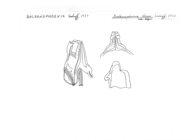MilliBase
MilliBase name details
Balkanophoenix Verhoeff, 1937
891091 (urn:lsid:marinespecies.org:taxname:891091)
uncertain
Genus
Balkanophoenix borisi Verhoeff, 1937 (type by monotypy)
masculine
Verhoeff, K. W. (1937). Ueber Diplopoden aus Bulgarien, gesammelt von Dr. I. Buresch und seinen Mitarbeitern. 4. Aufsatz. Mitteilungen aus den Königlichen Naturwissenschaftlichen Instituten in Sofia, 10: 93-120. Sofia
page(s): 111 [details]
page(s): 111 [details]
Sierwald, P.; Decker, P.; Spelda, J. (2025). MilliBase. Balkanophoenix Verhoeff, 1937. Accessed at: https://www.millibase.org/aphia.php?p=taxdetails&id=891091 on 2025-05-13
Date
action
by
original description
Verhoeff, K. W. (1937). Ueber Diplopoden aus Bulgarien, gesammelt von Dr. I. Buresch und seinen Mitarbeitern. 4. Aufsatz. Mitteilungen aus den Königlichen Naturwissenschaftlichen Instituten in Sofia, 10: 93-120. Sofia
page(s): 111 [details]
additional source Kime, R. D.; Enghoff, H. (2017). Atlas of European millipedes 2: Order Julida (Class Diplopoda). <em>European Journal of Taxonomy.</em> 346: 1–299., available online at https://doi.org/10.5852/ejt.2017.346
page(s): 45 [details]
status source Vagalinski, B.; Lazányi, E. (2018). Revision of the millipede tribe Brachyiulini Verhoeff, 1909 (Diplopoda: Julida: Julidae), with descriptions of new taxa. <em>Zootaxa.</em> 4421(1): 1-142., available online at https://doi.org/10.11646/zootaxa.4421.1.1
page(s): 14; note: "As regards Balkanophoenix, the description and figures of Verhoeff (1937) clearly indicate the presence of a mesomerital process, although one which is fused basally to the opisthomerite, rather tha...
[details]
page(s): 111 [details]
additional source Kime, R. D.; Enghoff, H. (2017). Atlas of European millipedes 2: Order Julida (Class Diplopoda). <em>European Journal of Taxonomy.</em> 346: 1–299., available online at https://doi.org/10.5852/ejt.2017.346
page(s): 45 [details]
status source Vagalinski, B.; Lazányi, E. (2018). Revision of the millipede tribe Brachyiulini Verhoeff, 1909 (Diplopoda: Julida: Julidae), with descriptions of new taxa. <em>Zootaxa.</em> 4421(1): 1-142., available online at https://doi.org/10.11646/zootaxa.4421.1.1
page(s): 14; note: "As regards Balkanophoenix, the description and figures of Verhoeff (1937) clearly indicate the presence of a mesomerital process, although one which is fused basally to the opisthomerite, rather tha...
"As regards Balkanophoenix, the description and figures of Verhoeff (1937) clearly indicate the presence of a
mesomerital process, although one which is fused basally to the opisthomerite, rather than freely articulated with it. The position of the ozopores considerably behind the suture comes as further support to the non-brachyiuline allocation of the genus. Balkanophoenix may be related to the Leucogeorgiini judging by the original description and drawings of its sole species, B. borisi Verhoeff, 1937. Its relatively elongated gonopods, the simple, slender opisthomerite, and the membanous connection between the latter and the mesomerite are all characteristic of the Leucogeorgiini. However, by the absence of study material of B. borisi, this remains a mere suggestion."
